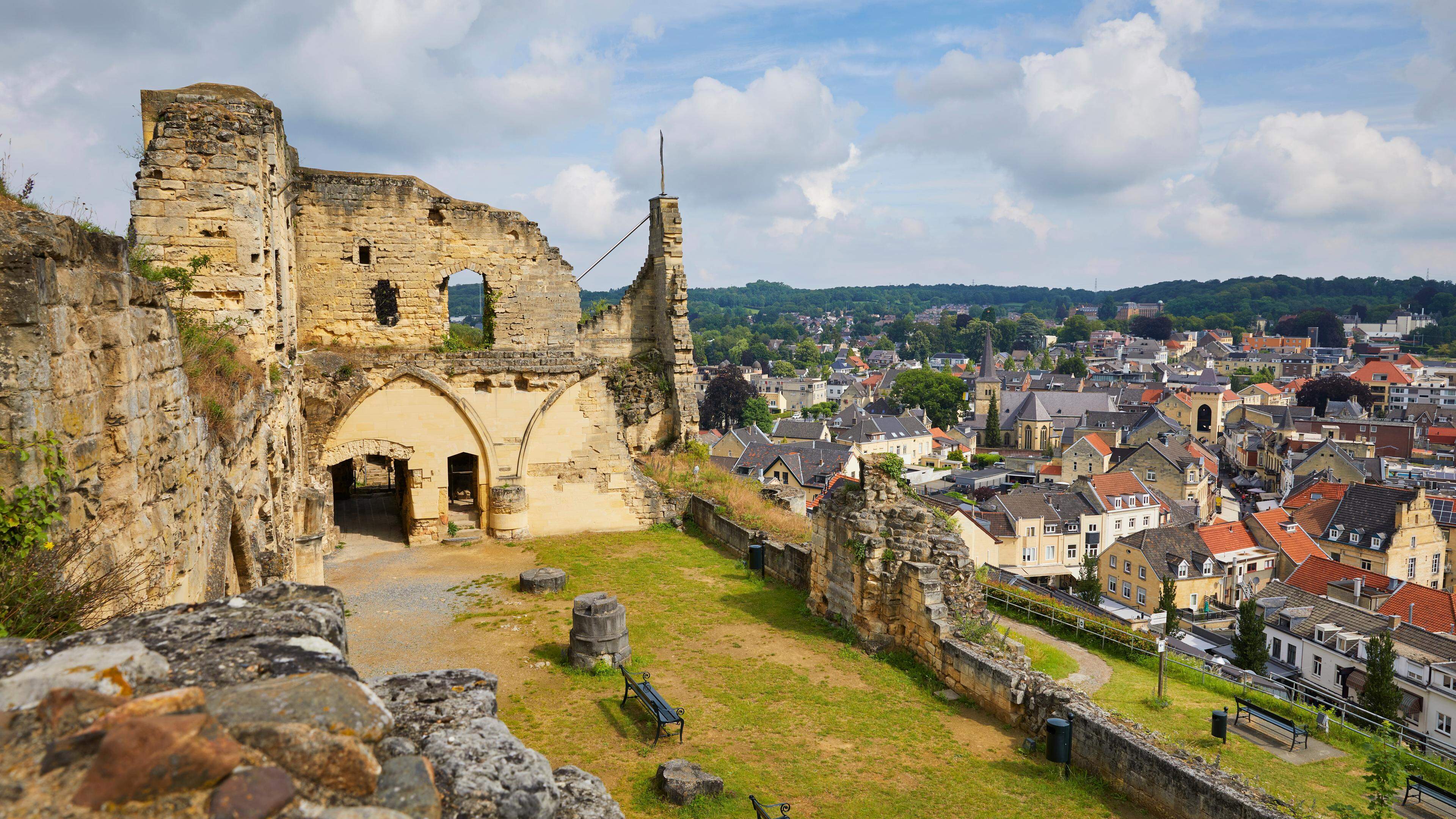Limburg’s secret pearl at Maastricht: Valkenburg Aan de Geul

Quite a few seem to have a knife with them or at least a sharp object. Either way, countless lovers feel called to immortalize with their names on the walls of the castle ruins of Valkenburg Aan de Geul in the Dutch province of Limburg. While other places attached to the grid and bridges, or the respective connection with color or pencils is bangfully displayed on walls and walls, couples in Valkenburg are scratching their names and their relationship status into the wall remains of the only height castle in the country. This also makes it clear how soft the rock that is so shaped for the region.
Many lovers immortalize themselves in the rock of the castle ruins in Valkenburg Aan de Geul. Photo: Karsten-Thilo Raab
Anyone who climbs the extensive fortress, the history of which goes back to the 11th century, immediately recognizes that this part of the Netherlands is anything but flat. Because the picturesque town in the Geultal is located in the middle of gentle, green hills. The historic old town ducks at the foot of the just 145 meter high castle mountain. This is shaped equally by the three well -preserved city gates, the Grendelpoort, the Berkelpoort and the Geulpoort, and by an unusual high density of restaurants, cafes and pubs.
Especially along the Grotestraat as well as the Munt and Berkelstraat, a gastronomic operation is urging the next. On sunny days and warm evenings, entire hosts then populate the tables and chairs outdoors and make use of the lush range of food and drinks. In the afternoon hours, quite a few can taste a typical “Limburgse Vlaai”, a small cake made of flat yeast dough with fruit compote filling. The “Zuurvlees”, a sweet and sour, is no less popular, especially for friends of more hearty dishes, which is similar to Sauerbraten.
The grotestraat in Valkenburg Aan de Geul has a lot to offer culinary. Photo: Karsten-Thilo Raab
From almost everywhere in the old town there is a view of the striking castle mountain, which is likely to be considered a hill. While the fortress, which is visible from afar in 1672, on the command of King Willem III. It was destroyed so that it did not fell into the hands of the French during the Dutch War (1672 to 1678), a spacious, man -made cave system, slumbering inside the mountain. From the Middle Ages, the so -called fluweelengrot was used as an underground quarry to dismantle marl. The sediment stone was once used one day to build the castle above the caves.
Dark and 12 degrees cold
« The workers used two to three days in the past few days to punch up to 300 kilograms of cuboids out of the marl and laboriously transport them on wooden rollers, » reports Claudia. The small, wiry woman with the gray -mottled hair leads interested parties several times a day through the fascinating gait system in Valkenburg Aan de Geul. Unsurprisingly, Claudia knows the fluweelengrot like her socket pocket. She is happy to make fun of misleading the « hobby cave researchers ». Then, in turn, it switches off the light of the two lanterns carried to show everyone, how pitch darkness is warm grottos and corridors in the constant twelve degrees Celsius.
The fluweelengrot has a long history: it served as a hiding place in the Second World War. Photo: Karsten-Thilo Raab
« In the nearby Cadier en Keer, two boys sneaked into the grotto in 1993. When their flashlight gave up the ghost, the two were helplessly wandered around and finally died as a result of hypothermia, » Claudia explains the serious and sad background of this action. Then the likeable Dutchman immerses in other, no less exciting chapters in history behind the ganglabyrinth. So she knows that she first found refuge here in the 18th century and that the residents of Valkenburg Aan de Geul were always looking for protection against the Nazi troops here during the Second World War.
Relief of a dinosaurs
In addition, the fluweelengrot, in which up to 80 million years old, fossil remains of marine animals can be admired, a variety of artistic charcoal drawings and religious representations, a romantic chapel from the 18th century and a huge half -bracket of a megalosaur. Of course, the descriptive representation of the mergel mining and a look at the arduous workers of the legendary block breakers should not be missing before it goes back out of daylight and into the atmospheric catering mile of Valkenburg Aan de Geul.
Where do you have the best view of New York?
More information at www.valkenburg.nlas well as the castle ruins and fluweelengrot: www.ksteelvalkenburg.nl.







